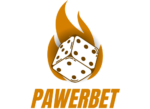Sports betting can be thrilling, but understanding how odds work is crucial to making informed bets. Let’s explore the different types of odds, how they impact payouts, and the strategies for responsible betting. Whether you’re placing a wager on the NHL, college football, the NBA, MLB or the NFL, understanding and researching the odds is the key to rewarding sports betting.
How Do Odds Work in Sports Betting?
Odds are the backbone of sports betting, determining how much you can win from a bet. They represent the probability of an event occurring and are crucial for calculating potential payouts. There are three main types of betting odds: Moneyline, Fractional, and Decimal.
Moneyline Odds (American)
Moneyline odds are extremely popular in the United States, in part due to the ease with which they can be understood. The format of Moneyline odds by FanDuel allows easily understandable betting on both underdogs and favorites, using a plus (+) or minus (-) sign to indicate team odds. For example, if a team has odds of -150, you need to bet $150 to win $100. Conversely, if a team has odds of +200, a $100 bet wins you $200. The larger the gap, the higher the favorite’s chances of winning.
Example Calculation
Consider a match between the Pittsburgh Steelers and the Kansas City Chiefs:
- Steelers: +585
- Chiefs: -760
If you bet $100 on the Steelers and they win, you’d earn $585, plus your original stake, totaling $685. Betting $760 on the Chiefs would win you $100, resulting in a total payout of $860.

Implied Probability
Implied probability is the likelihood of an outcome as suggested by the odds. For Moneyline odds, the formula is:
- Favorites: Odds / (Odds + 100)
- Underdogs: 100 / (Odds + 100)
Fractional Odds (British)
Fractional odds, common in the UK, are expressed as a ratio of profit to stake, such as 6/1. This means you win $6 for every $1 wagered. They’re easy to interpret once you understand the ratio represents potential profit over the stake.
Example Calculation
For the NBA Championship odds:
- Brooklyn Nets: 13/5
- Golden State Warriors: 9/2
- Milwaukee Bucks: 7/1
A $100 bet on the Nets could yield a $260 profit, totaling a $360 payout. The implied probability is calculated as:
- Stake / Total Payout
Decimal Odds (European)
Decimal odds, popular in Europe, show the total payout for every $1 wagered. They are straightforward: multiply your stake by the odds to get the total payout.
Example Calculation
Suppose the odds for the 2020 U.S. presidential election were:
- Donald Trump: 4.00
- Joe Biden: 1.3
A $100 bet on Trump would result in a $400 payout, while the same bet on Biden would yield $130.
Implied Probability
The formula for calculating implied probability with decimal odds is:
- 1 / Odds
Conversion Between Odds Formats
Understanding how to convert between Moneyline, Fractional, and Decimal odds is essential for strategic betting. Here’s a quick guide:
- Moneyline to Decimal: If positive, (Odds/100) + 1; if negative, (100/|Odds|) + 1.
- Fractional to Decimal: (Numerator/Denominator) + 1.
- Decimal to Moneyline: If greater than 2, (Decimal – 1) x 100; if less, -100/(Decimal – 1).
Choosing the right format helps tailor your strategy and understand the odds better.
True Odds vs. Implied Odds
True odds reflect the actual likelihood of an event without the bookmaker’s profit margin. Implied odds include this margin, often called “juice” or “vig.” For example, a coin toss’s true odds are +100, but sportsbooks might offer -105 to ensure profit.
Understanding Over-round
Bookmakers build a profit margin, known as over-round, into odds, ensuring total probabilities exceed 100%. For instance, if two outcomes have probabilities of 71.43% and 33.33%, the total is 104.76%. The extra 4.76% is the bookmaker’s profit.
Types of Bets in Sports Betting

Over-Under Bets
People who bet on over-unders bet on whether a number, like the total score, will be over or under a certain value. Odds are set based on perceived probabilities.
Parlay Bets
Parlay bets combine multiple wagers into one. They offer higher payouts but require all bets to win. The odds are multiplied for each selection.
Teaser Bets
Teaser bets allow adjusting point spreads for better odds, though payouts are lower. Common in football, they provide more control over your bets.
Prop Bets
Prop bets focus on specific events within a game, like player achievements. They offer unique odds and can add excitement to betting.
How Odds Impact Payouts
Odds directly influence potential payouts. Higher odds mean greater potential winnings but lower chances of success. Consider the risk-reward balance when placing bets.
Know Your Odds
Understanding odds in sports betting is crucial for making informed decisions. By mastering different odds formats and their conversions, you can enhance your betting strategy and maximize potential payouts. Always remember to bet responsibly and keep learning to improve your skills.

